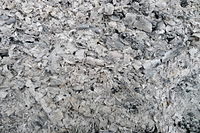
Photo from wikipedia
Concentrations and congener profiles of seven di- to hexachlorinated benzenes (CBzs) were characterized in bottom ash and fly ash samples collected simultaneously from one medical waste incinerator (MEWI) and one… Click to show full abstract
Concentrations and congener profiles of seven di- to hexachlorinated benzenes (CBzs) were characterized in bottom ash and fly ash samples collected simultaneously from one medical waste incinerator (MEWI) and one municipal waste incinerator (MUWI) in northern Vietnam. Total concentrations of seven CBzs in the fly ash samples ranged from 6.98 to 34.4 (median 19.1) ng g−1 in the MEWI, and ranged from 59.1 to 391 (median 197) ng g−1 in the MUWI. Concentrations of CBzs in the bottom ash samples of the MEWI (median 1.95; range 1.53–5.98 ng g−1) were also lower than those measured in the MUWI samples (median 17.4; range 14.5–42.6 ng g−1). Levels of CBzs in the fly ash samples were significantly higher than concentrations measured in the bottom ash samples, partially indicating the low-temperature catalytic formation of these pollutants in post-combustion zone. In general, higher chlorinated congeners (e.g., hexachlorobenzene, pentachlorobenzene, and 1,2,4,5-tetrachlorobenzene) were more abundant than lower chlorinated compounds. However, compositional profiles of CBzs were different between the ash types and incinerators and even between the same sample types of different sampling days, suggesting that the formation of CBzs in these incinerators is complicated and influenced by many factors. Emission factors and annual emission amounts of CBzs were estimated for the two incinerators by using actually measured data of CBz concentrations in the ash. Daily intake doses and cancer risks of ash-bound CBzs estimated for workers in the two incinerators were generally lower than critical values, but cancer risks caused by other relevant pollutants (e.g., polycyclic aromatic hydrocarbons, polychlorinated biphenyls, and dioxin-related compounds) were not considered.
Journal Title: Environmental Science and Pollution Research
Year Published: 2020
Link to full text (if available)
Share on Social Media: Sign Up to like & get
recommendations!